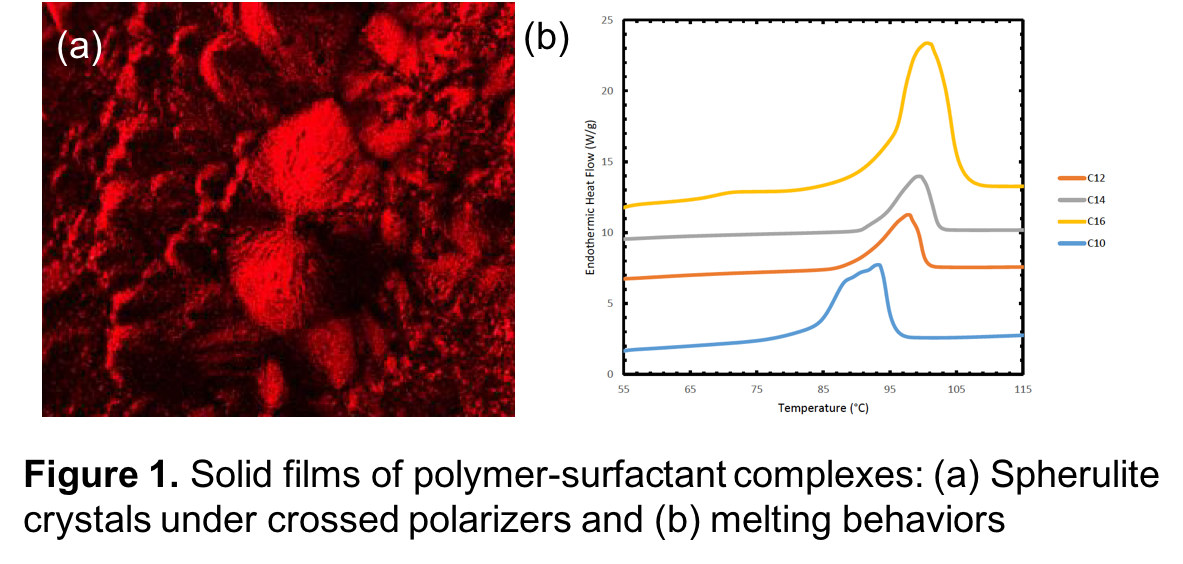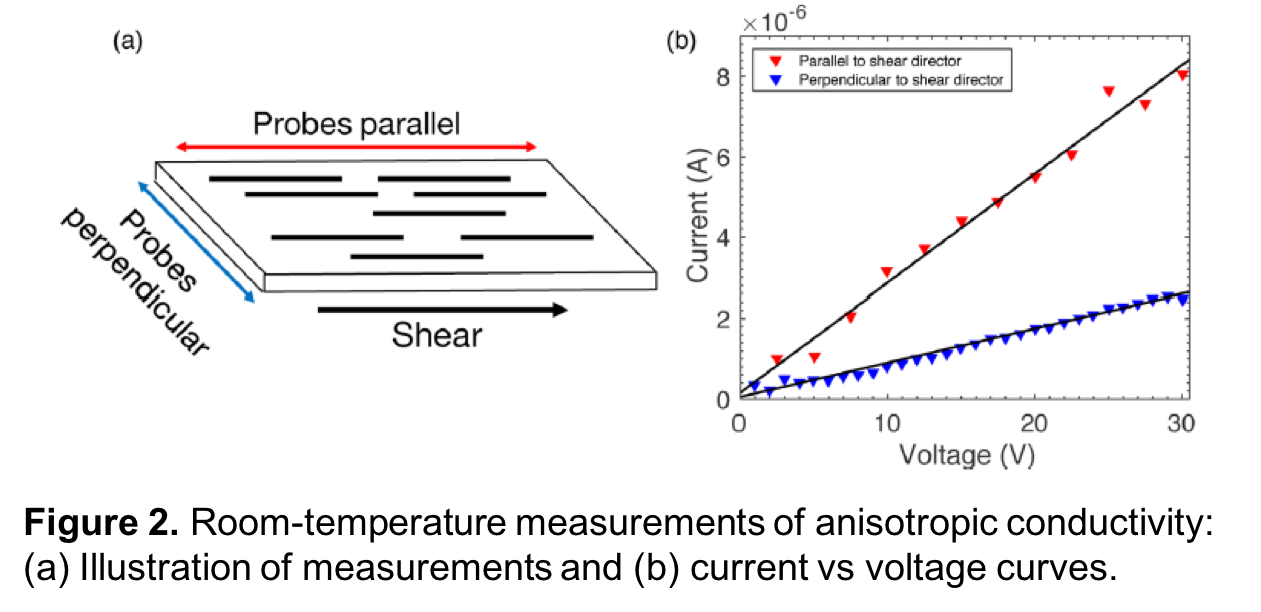Reports: UR753970-UR7: Surfactant-Induced Multiscale Assembly of Aqueous Conjugated Polymers
Shanju Zhang, PhD, California Polytechnic State University
Conjugated polymers are semiconducting materials that have demonstrated great promise for emerging applications in flexible optoelectronic devices using low-cost solution-based processing methods. The device performance is largely dependent on the morphology and microstructure of polymer thin films. During the fabrication of thin films such as spin-coating, spray-coating, or solution-casting, the polymer solution is becoming more and more concentrated until the formation of solid thin films. As such, the polymer solution properties are pivotal in determining the morphology and microstructure of resulting solid thin films. During the first year of this award, we reported the assembled structures and properties of diluted solutions of conjugated polymer-surfactant complexes; during the second year period, we presented the liquid crystalline behaviors of concentrated solutions of supramolecular complexes. We applied spectroscopic methodologies to study unique kinetic law of polymer solutions.
During the third year of this award, we studied the solid thin films of polymer-surfactant supramolecular complexes. We used polarized optical microscope (POM) to demonstrate the morphology and structure of solid thin films. We found the supramolecular complexes in the thin films tended to exhibit de-complexation behaviors during drying. In another word, the bonding between the polymer and surfactants was partially degraded, as evidenced by observation of fractal crystals of surfactants and featureless regions of the polymers. Interestingly, when the bulk solution of supramolecular complexes was evaporated in the glass vial, the spherulite crystals of polymer complexes were observed indicating no de-complexation (Figure 1a). We further applied differential scanning calorimeter (DSC) to study crystal melting behaviors of solid thin films (Figure 1b). It is found that increasing the surfactant length improved the melting temperature.
To fabricate large-area alignment of thin films for utilization of anisotropic properties of conjugated polymers in various emerging energy applications, simple mechanical shearing was applied to liquid crystalline (LC) solutions to get uniform LC monodomain structures. After complete drying, LC alignment was maintained in the solid thin film. To this end, electrical conductivities were measured at room temperature in a four-point probe configuration. The anisotropy in electrical conductivity is clearly demonstrated (Figure 2). Careful calculations display that the electrical conductivities of the aligned films parallel and perpendicular to the shear direction are 8.0 x 10-4 and 2.0 x 10-4 S/m, respectively. As the conjugated backbone is parallel to the shear direction, our results indicate that the intra-chain charge transport along the conjugated backbone is much more efficient than the inter-chain charge hopping through pi-pi stacking.
Inspired by the effect of surfactants on assembly behaviors of conjugated polymers, we also investigated the effect of hydrogen bonding on assembly behaviors of conjugated polymers. In this case, the carboxylate acid groups were introduced onto the side-chain. We studied multiple scale assembly behaviors from diluted, concentrated solutions to solid thin films (Figure 3). The dynamic process of coil-to-rod transitions in the diluted solutions suggested a second order rate law while the concentrated solutions displayed lyotropic nematic LC gels. We also applied mechanical shearing onto nematic LC gels to get uniform monodomain structures which were maintained on the solid thin films after complete drying. The electrical conductivity of aligned films showed anisotropic behaviors, both parallel and perpendicular to the shear direction to be 5.2 x 10-3 and 2.3 x 10-3 S/m, respectively.
In summary, we studied multiscale assembly behaviors of conjugated polymers for charge transport anisotropy from diluted, concentrated solutions to solid thin films. We combined three years work to publish a paper in Macromolecules (2017) and a Cal Poly student served as a lead author.
During the third year of this award, one 4+1 MS student and three undergraduate students have been involved in research from the support of this award. One student represented Cal Poly to attend California State University (CSU) Research Competition and received 2nd place. One student received 1st place of oral presentation in the Polymer Symposium of the 253rd ACS national meeting. The research also resulted in a Cal Poly’s Baker and Koob Endowments award. There have been four oral talks and posters given by undergraduate and graduate students in the national and regional conference meetings. One journal paper has been published in Macromolecules (2017) and seven undergraduate students serve as co-authors.














